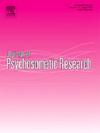墨西哥裔美国老年人睡眠时间与跌倒之间的关系:纵向研究中的性别差异。
IF 3.3
2区 医学
Q2 PSYCHIATRY
引用次数: 0
摘要
目的:研究性别在无跌倒史的墨西哥裔美国老年人的睡眠时间、睡眠障碍和睡眠质量与跌倒之间的关系。方法:参与者(N = 701)来自西班牙裔老年人流行病学研究既定人群(2007/08-2016)。自变量为睡眠时间(≤5、6、7、8、9、≥10 h/夜)、睡眠障碍和睡眠质量。结局变量为跌倒,分为无跌倒和≥1跌倒。协变量包括社会人口统计学和健康特征。采用广义估计方程模型,在控制所有协变量的情况下,估计随时间推移跌倒的比值比(OR)和95%置信区间(CI)是睡眠持续时间、睡眠障碍和睡眠质量的函数。结果:在控制所有协变量后,报告睡眠≤5小时/夜的男性参与者与睡眠8小时/夜的男性参与者相比,随着时间的推移摔倒的几率更大(OR = 5.43, 95% CI = 1.70-17.3)。在控制所有协变量后,入睡困难或睡眠质量差的男性随着时间的推移摔倒的几率更大(or = 2.35, 95% CI = 1.23-4.49; or = 2.38, 95% CI = 1.12-5)。在女性中,睡眠时间、睡眠障碍或睡眠质量与跌倒之间没有明显的联系。结论:随着时间的推移,睡眠时间短、睡眠障碍和睡眠质量差的老年墨西哥裔美国男性摔倒的几率更大。促进睡眠健康和行为干预可降低这一人群跌倒和因跌倒而受伤或死亡的风险。本文章由计算机程序翻译,如有差异,请以英文原文为准。
Relationship between sleep duration and falls in older Mexican Americans: Sex differences in a longitudinal study
Purpose
To examine the effect of sex in the relationship of sleep duration, sleep disorders, and sleep quality with falls among older Mexican Americans without history of falls at baseline over 9 years of follow up.
Methods
Participants (N = 701) were from the Hispanic Established Populations for the Epidemiologic Study of the Elderly (2007/08–2016). Independent variables were sleep duration (≤5, 6, 7, 8, 9, ≥10 h/night), sleep disorders and sleep quality. The outcome variable was falls, categorized as none versus ≥1 falls. Covariates included socio-demographics and health characteristics. Generalized estimating equation models were performed to estimate the odds ratios (OR) and 95 % Confidence Interval (CI) of falls over time as a function of sleep duration, sleep disorders, and sleep quality, controlling for all covariates.
Results
Male participants who reported sleep of ≤5 h/night had greater odds (OR = 5.43, 95 % CI = 1.70–17.3) of falls over time compared to those who slept 8 h/night, after controlling for all covariates. Males with trouble falling asleep or poor quality of sleep had greater odds (OR = 2.35, 95 % CI = 1.23–4.49; OR = 2.38, 95 % CI = 1.12–5, respectively) of falls over time, after controlling for all covariates. No significant association was found between sleep duration, disorders, or quality with falls among females.
Conclusions
Older Mexican American males with short sleep duration, sleep disorders, and poor sleep quality had greater odds of falls over time. Sleep health promotions and behavioral interventions may reduce the risk of falls and injuries or death due to falls in this population.
求助全文
通过发布文献求助,成功后即可免费获取论文全文。
去求助
来源期刊
CiteScore
7.40
自引率
6.40%
发文量
314
审稿时长
6.2 weeks
期刊介绍:
The Journal of Psychosomatic Research is a multidisciplinary research journal covering all aspects of the relationships between psychology and medicine. The scope is broad and ranges from basic human biological and psychological research to evaluations of treatment and services. Papers will normally be concerned with illness or patients rather than studies of healthy populations. Studies concerning special populations, such as the elderly and children and adolescents, are welcome. In addition to peer-reviewed original papers, the journal publishes editorials, reviews, and other papers related to the journal''s aims.

 求助内容:
求助内容: 应助结果提醒方式:
应助结果提醒方式:


